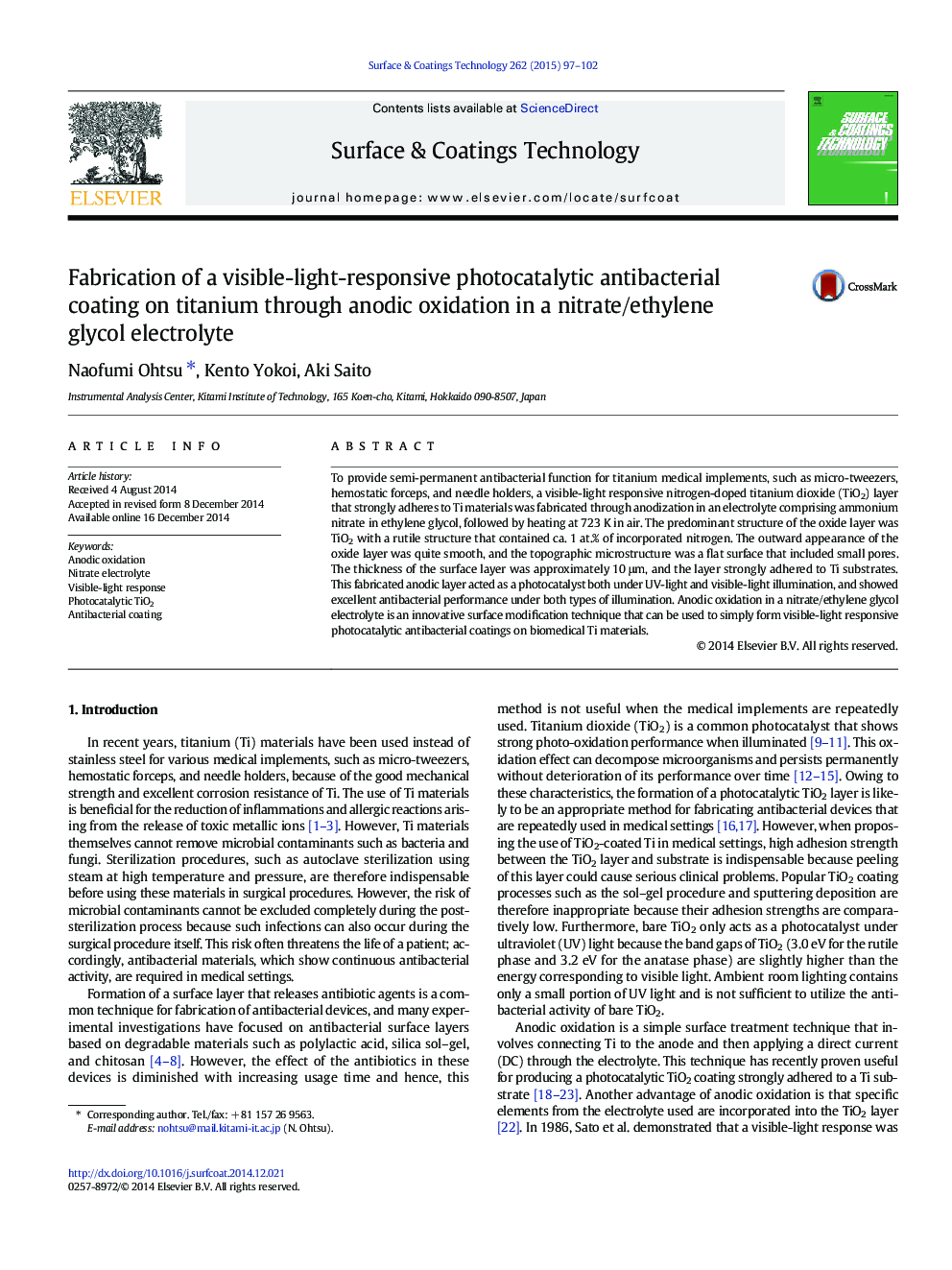| Article ID | Journal | Published Year | Pages | File Type |
|---|---|---|---|---|
| 1657200 | Surface and Coatings Technology | 2015 | 6 Pages |
•TiO2 layer was fabricated by anodizing in a nitrate/ethylene glycol electrolyte.•The fabricated layer was TiO2 with a rutile structure that contained ca. 1 at.% of nitrogen.•The fabricated TiO2 layer strongly adheres to Ti materials.•The layer acted as a photocatalyst both under UV-light and visible-light illumination.•The layer showed antibacterial performance under both types of illumination.
To provide semi-permanent antibacterial function for titanium medical implements, such as micro-tweezers, hemostatic forceps, and needle holders, a visible-light responsive nitrogen-doped titanium dioxide (TiO2) layer that strongly adheres to Ti materials was fabricated through anodization in an electrolyte comprising ammonium nitrate in ethylene glycol, followed by heating at 723 K in air. The predominant structure of the oxide layer was TiO2 with a rutile structure that contained ca. 1 at.% of incorporated nitrogen. The outward appearance of the oxide layer was quite smooth, and the topographic microstructure was a flat surface that included small pores. The thickness of the surface layer was approximately 10 μm, and the layer strongly adhered to Ti substrates. This fabricated anodic layer acted as a photocatalyst both under UV-light and visible-light illumination, and showed excellent antibacterial performance under both types of illumination. Anodic oxidation in a nitrate/ethylene glycol electrolyte is an innovative surface modification technique that can be used to simply form visible-light responsive photocatalytic antibacterial coatings on biomedical Ti materials.
